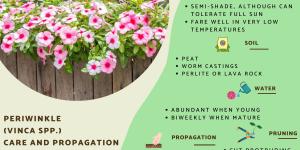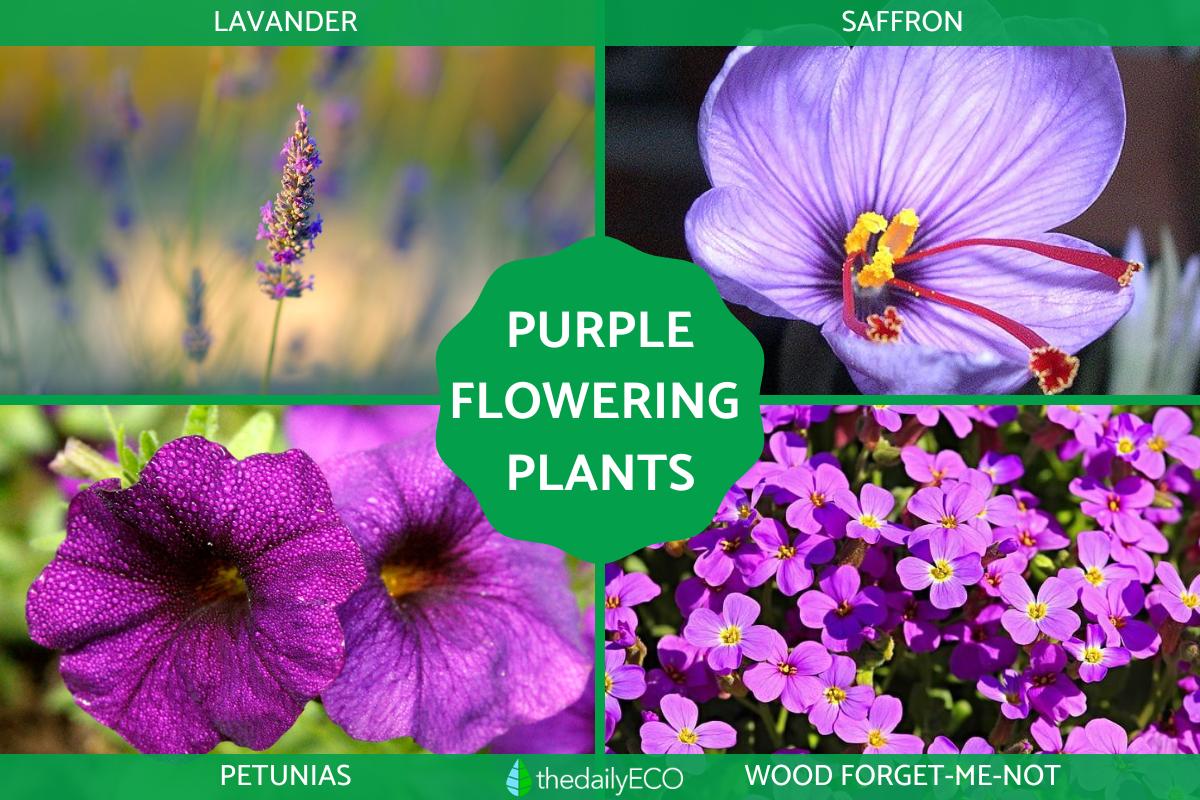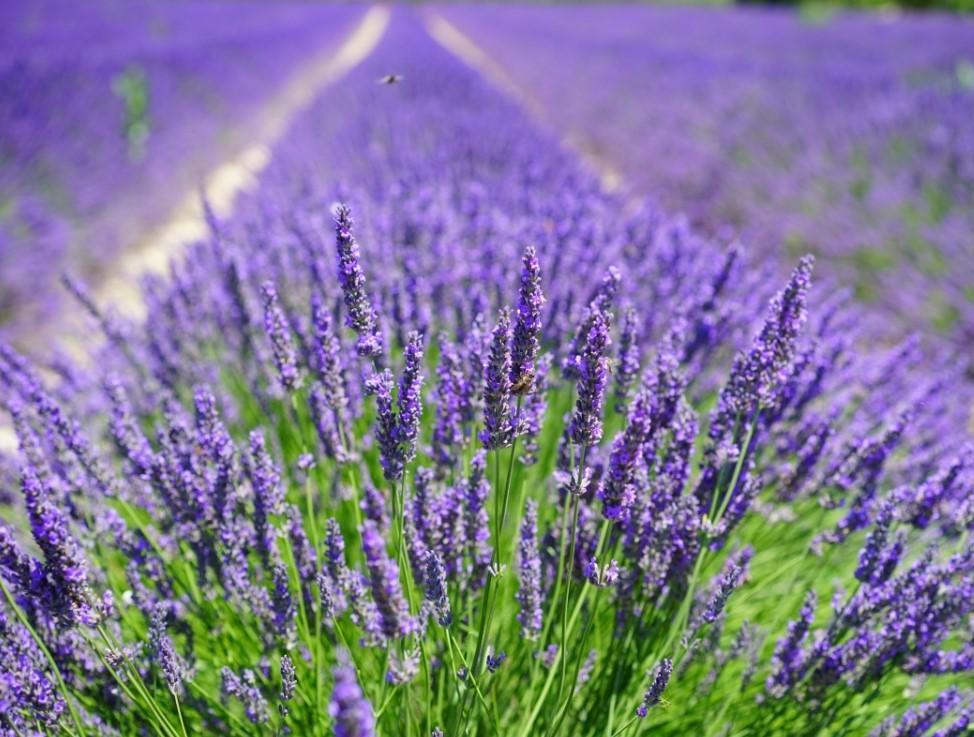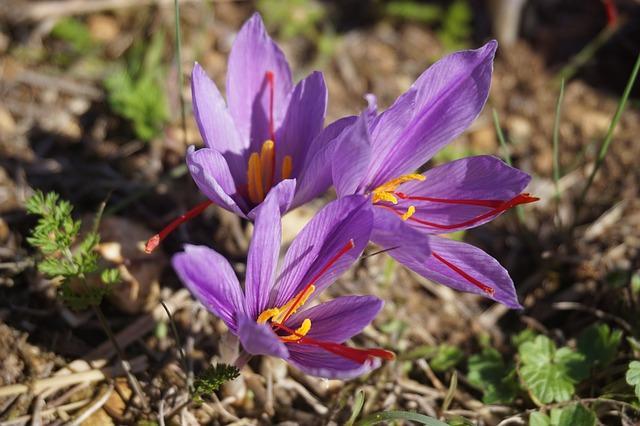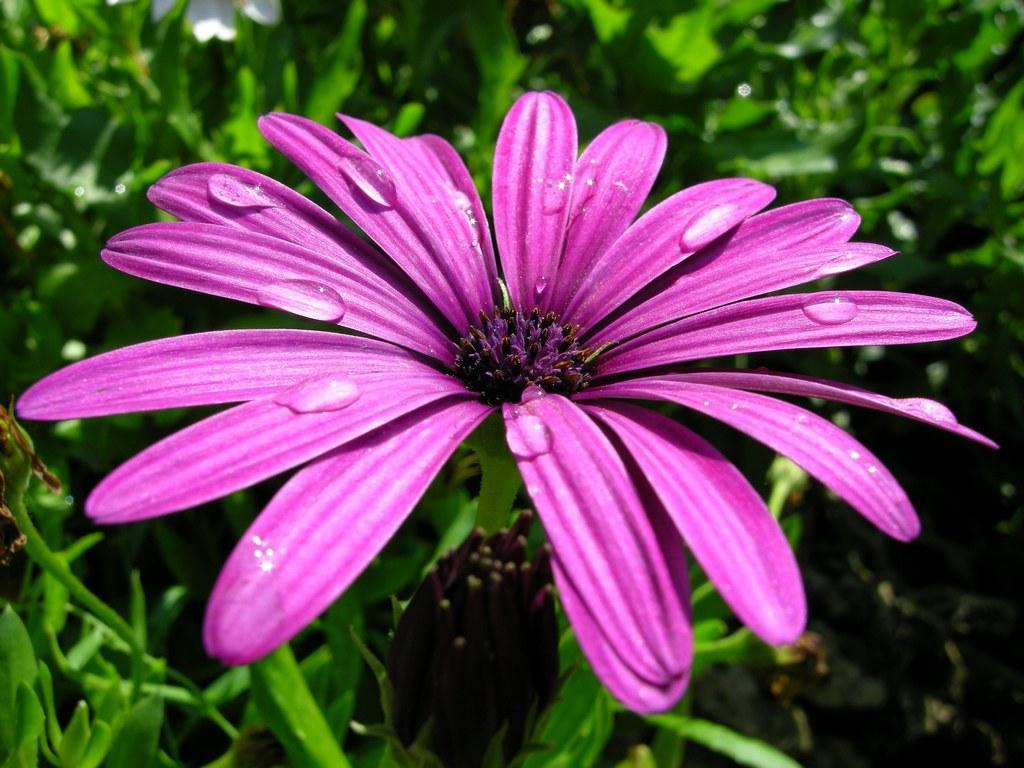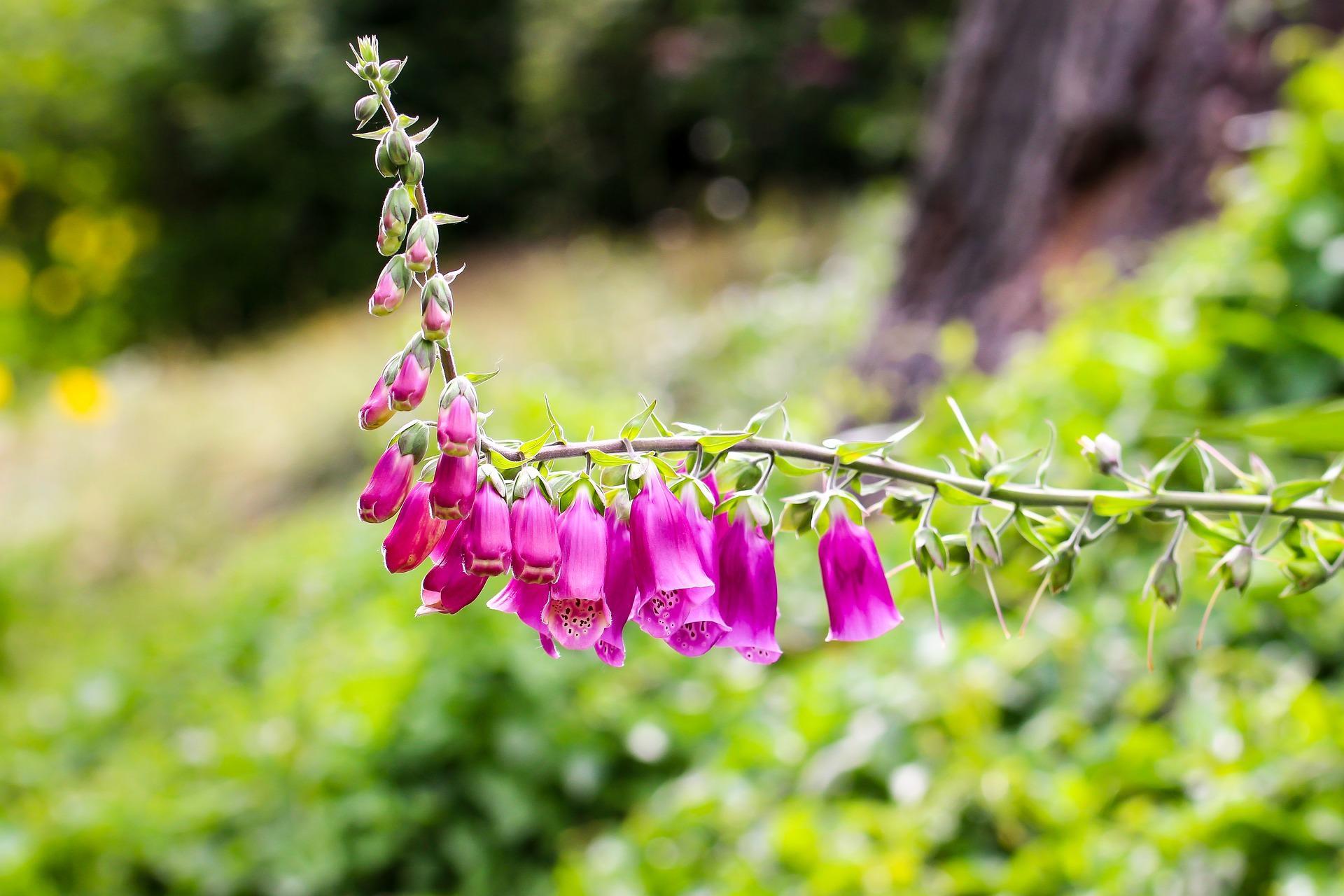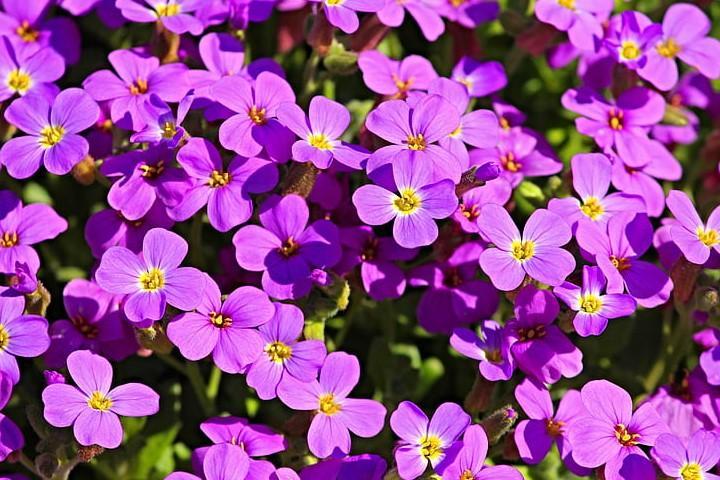Purple Flowering Plants for Your Home or Garden


Purple is a color that is not only very striking and pleasing to the eye, but also exudes tranquility and harmony. For this reason, garden and decor lovers are regularly on the lookout for purple or lilac flowers to add a relaxing touch to any space. They are very eye-catching in the garden, and you can use their properties to make incredible flower arrangements. The color violet or lilac stimulates the senses and the psyche. Therefore, flowers of this color are associated with spiritual power, tranquility, wisdom, nobility, mystery, and creativity.
In the following thedailyECO article, we have listed 10 purple flowers that you can grow in the garden or in a pot.
- Lavender
- Saffron
- Dimorphoteca
- Petunia
- Lady's glove
- Dense blazing star
- Wood Forget-me-not
- Rose
- Lily
- Bougainvillea
Lavender
You can not talk about purple flowers without mentioning the most famous among them, lavender. There are about 30 species, with Lavandula officinalis being the most common.
The plant is widely known for its pleasant and fresh aroma, so it is often used in the perfume and fragrance industry. It is easy to grow due to its great hardiness and rarely exceeds 1.5 meters in height.
Lavender needs full sun to thrive, although it can tolerate afternoon shade in the hottest climates. The plants are very drought resistant, but bloom better if not allowed to dry out. Lavender is not picky about soil, and its presence attracts bees and butterflies to the garden.

Saffron
Crocus sativus, better known as saffron, is mainly known as a spice. In fact, it is one of the most expensive spices in the world, which is why it is also called red gold. The spice is extracted from the reddish stigmas of the flower in a very delicate process. The cultivation of the saffron crocus by humans, as well as the trade and use of saffron, has existed for more than 3,500 years and spans various cultures, continents and civilizations.
However, the purple crocus flower with its large mauve, purple and violet petals has tremendous decorative value. If you grow one of these plants at home, do not even think about harvesting the spice, because it takes more than half a million flowers to make one kilogram of saffron.

Dimorphoteca
Dimorphotheca is a genus of plants in the Asteraceae family native to Africa and Australia. They are often crossed with Osteospermum, producing violet flowers that are both striking and beautiful. They do not grow more than 40 cm high and are typically used as ground cover in gardens with Mediterranean or tropical climate. It is sometimes called dimorphotheca daisy, because some of its species resemble daisies.
It is important that you place the plant outdoors in full sun. The frequency of watering depends largely on the climate and location, but it is important to always remember that it tolerates drought well.

Petunia
Petunias, scientifically called Petunia hybrida, are plants known for their characteristic funnel or bell-shaped flowers. Though their flowers come in a variety of colors and motifs, purple flowers are among those with the most intense and vivid colors.
Petunias are also known for being one of the first spring flowers to bloom. It is very inexpensive to buy and quite hardy. Petunias can tolerate relatively harsh conditions and hot climates. They need at least five hours of sunlight every day. They grow well in low humidity, moist soil.

Lady's glove
Digitalis purpurea, also known as foxglove, is a poisonous flowering plant native and widely distributed throughout most of temperate Europe. It grows as a biennial or perennial and is distinguished by its large bell-shaped flowers, which range in hue from white to pink to purple.
The flowers are arranged in a showy, terminal, elongated raceme, and each flower is tubular and pendulous. The plant reaches a height of just over three feet, and its blooming season can last up to three months. The foliage forms a dense rosette near the ground in the first year.

Dense blazing star
Liatris spicata, the dense blazing star or prairie feather, is a herbaceous perennial flowering plant native to eastern North America where it grows in wet prairies and sedge meadows. It reaches growth heights between 60 and 150 cm and can be identified by its erect flower stalk with small, pointed leaves and its showy purple, lilac or pink flower spikes.
It blooms in summer and requires partial shade in hot climates or direct sunlight in temperate or cold areas. A well-drained soil is preferred to prevent rot, although the plants also prefer moist soil. However, the plants do not tolerate wet soil in winter. Also, the plants need regular watering during the first growing season to develop strong roots.

Wood Forget-me-not
Myosotis sylvatica, also known as the wood forget-me-not or woodland forget-me-not, is a species of flowering plant native to Europe. The flowers are usually purple, but some plants, especially those in cultivation, may be pink, rose, yellow or white. The flowering season is early summer, with additional flower stalks sometimes developing later in the season. The plant is visited by bees, which climb directly into the flower tube to collect the nectar it contains.
The plants are short-lived, but easily self-seed in favorable locations. The plants maintain their leaf growth throughout the winter.
Due to the cardiac glycoside digitoxin, the leaves, flowers, and seeds of this plant are toxic to humans and some animals and can be fatal if eaten.

Rose
A rose is either a woody perennial flowering plant of the genus Rosa in the family Rosaceae or the flower that bears it. There are more than 300 species and tens of thousands of cultivars. In fact, ornamental roses have been cultivated for thousands of years, with the earliest known cultivation dating back to at least 500 BC in the Mediterranean countries, Persia and China.
Rose perfumes are made from rose oil, a blend of volatile essential oils obtained by steam distillation of crushed rose petals.
What many do not know is that among the many colors roses can take on is purple, although it's not the most common. In fact, some of the most gorgeous roses bloom in shades of purple. Purple roses come in a variety of shades, from pale purple to deep, rich burgundy red. Common purple roses species include: Roseraie de l'Hay, Charles de Mills, Pure Poetry and Katie's Rose.

Lily
Lilies are another of the most popular flowers today, both for their aroma and for their undeniable beauty. Also called lilies , plants of the Lilium genus are very elegant flowers, widely used in floral arrangements. Currently they are widespread throughout practically the entire world and, among their possible colors, are the beautiful purple flowers of lily .

Bougainvillea
This climbing shrub (Bougainvillea glabra) which includes several species of the genus Bougainvillea, is native to eastern South America, where it occurs from Brazil west to Peru and south to southern Argentina. They are evergreen if there is rain throughout the year, or deciduous if there is a dry season.
Because of its beautiful leaves in purple, pink, fuchsia, red and white, it is great for covering all kinds of surfaces and structures. The leaves have these colors, not the flowers. The actual flower of the plant is small and generally white. Bougainvillea is sometimes called a "paper flower" because its bracts are thin and papery.

If you want to read similar articles to Purple Flowering Plants for Your Home or Garden, we recommend you visit our Plant care and cultivation category.



